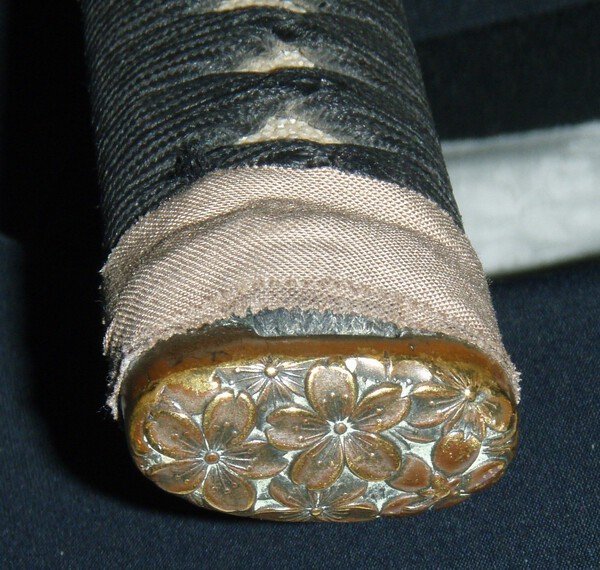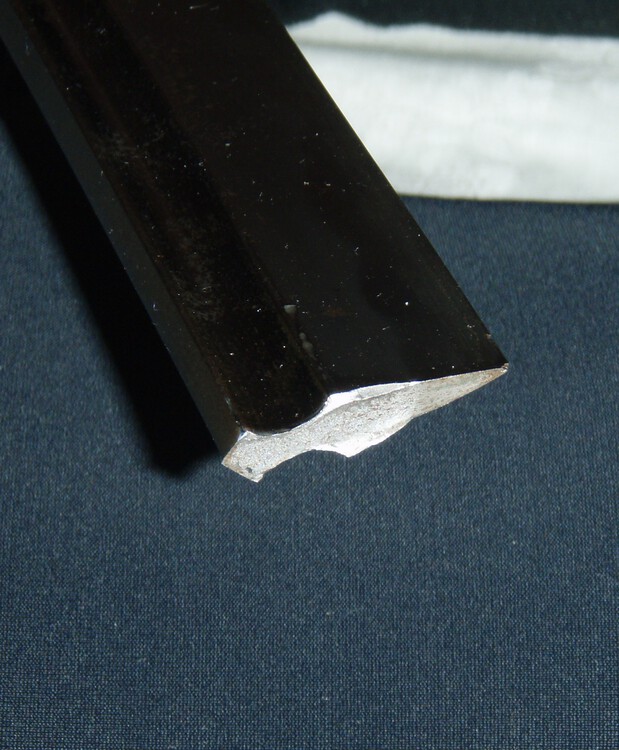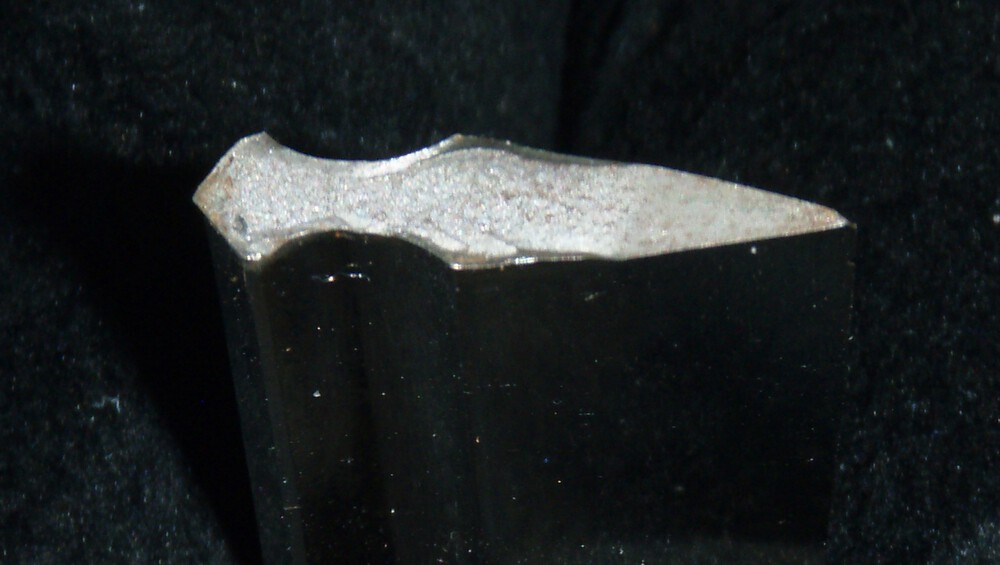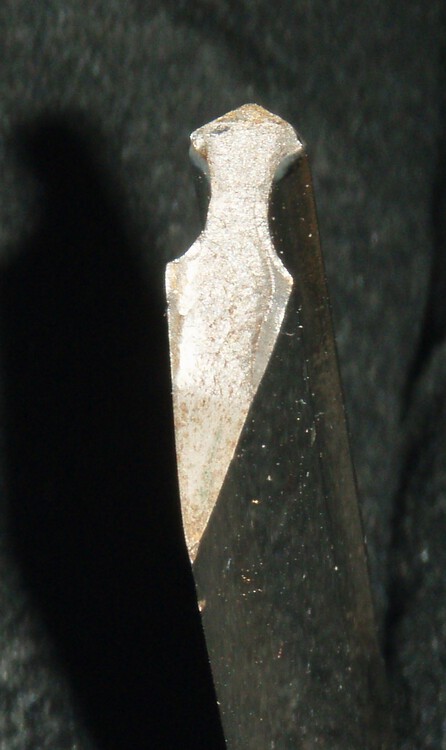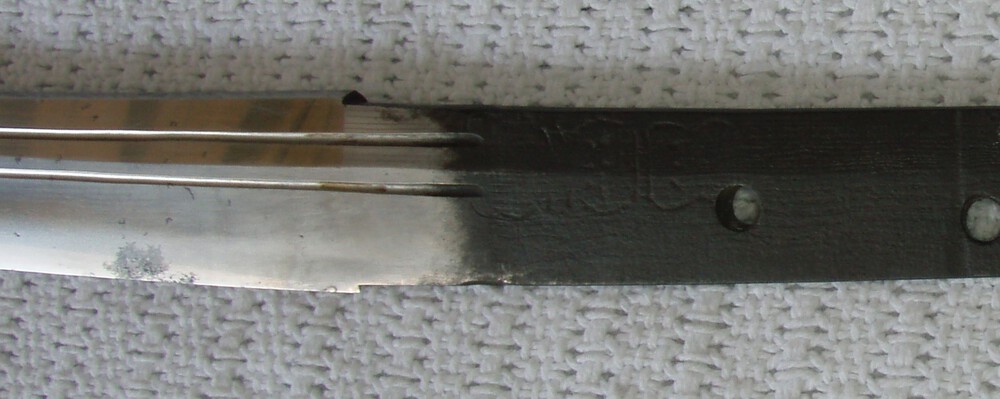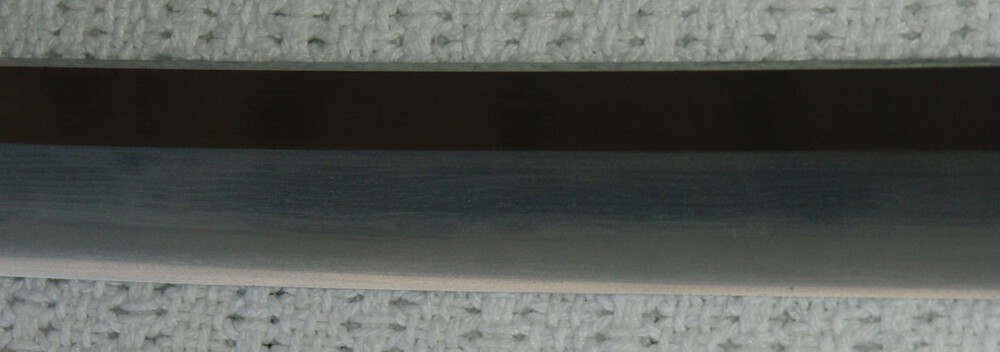-
Posts
422 -
Joined
-
Last visited
-
Days Won
9
Content Type
Profiles
Forums
Events
Store
Downloads
Gallery
Everything posted by Stegel
-
Yes George, I remember reading that towards the last few years of the war, "non rank" tassel's were actually implemented by the Japanese forces to counter sniper attacks. Assuming that snipers had worked out colours and associated them with rank. As a result all tassel's were the 'tan' brown from that point onwards(not sure of exact date). The navy did not have this problem as they did not differentiate rank with tassel colour. It may have already been the case with Civil Authorities, i don't know for sure, but it would have brought all the army into line, it makes sense to me at least. I remember Roy Lindus indicating he had a perfectly legitimate naval Kai Gunto tassel which was green or greenish, he may actually have a very late war tassel as the tsuka ito on late war Kai Gunto (with more spartan fittings) actually appears as a shade of green. Please correct me if i'm wrong. Ernst
-
Hi Rick, All i could find was that there are 'early' and 'late' war tassels. Apparently the early ones are thinner. This is a quote from a Web page where a Shin Gunto tassel is for sale, the description mentions: This particular tassel is an early war type with bordered edges, and is much thinner and narrower than the later tassels. The tassel is approx. 22 inches in length which makes it longer than most. I know on Omuhra's Web page, he mentions the difference in 'Quality' which i presume would have also meant price for the officers who needed to buy them. The better quality has the reverse colour along the edges. Lengths vary, i noticed with mine that the thinner 'early' ones are generally longer, perhaps i'm wrong here, but would not mind to be corrected by some other members. Hope this helps Ernst
-
Very nice Jean, Congratulations! I thoroughly enjoyed reading this thread. Thanks to all for your input Ernst
-
Hi GreenEyes? Are you able to post any pics? I would very much like to see this blade. Ernst
-
I have the blade in front of me after cleaning the nakago earlier. I did this to see if there were any showa/seki stamps or the remains of a stamp on the blade. No Stamps or apparent remains of stamps are present. Only the bottom half of the blade remains unfortunately, some 305mm of blade plus 215 of nakago. It appears to have been well made, that is, the nakago is shaped with care, finished with file marks,which appear to be down the nakago at 40deg off the back of the nakago. It appears the whole of the nakago is coverd in file marks. The blade is sharp the whole length up to the machi. The temper line runs off the blade after the machi, in the area under the habiki. It is the large wavy type(sorry i forget the name of it and don't have a text handy!) The fuller width is wider along the blade and is reducing in width as we go along the nakago to the very end. I can feel this variation by running my fingers along the fuller the length of the blade. The marks in the fuller run along the fuller, hence my guess at a roller being used I'm assuming by the shape of the nakago that it is Gendiato/Showato. No evidence of a date signed on the reverse. I hope this helps for now, until i get the pics of the cross sectional cuts later this week, i'll also include better pics of the whole blade and close ups of the nakago and hamon if possible. /Ernst BTW- i will get cuts made at the high and low ends of the wavy hamon, perhaps this will tell more on the apparent envelope we see in the original break?
-
Some interesting comments from our local CSI team! I was looking for the fittings when i came across the broken blade again. As it was broken, i thought i'd post this thread for all to see the blade profile. I posted the nakago of it last week, (it was on the what comes first in the smithing process question) where the fuller/bohi appeared to be 'rolled' on after the mei had been signed and as a result, only half the mei remained. There are no showa or seki stamps on the nakago, if they were present, its possible the fuller was rolled over them, effectively removing all trace of them? I'm inclined to agree with James, if the groove was cut, then wouldn't you stop before the mei, instead of damaging it? perhaps it was done by an apprentice? I'm assuming it was still mass produced, so i'm not sure how the fuller is made in this case, perhaps forged, pressed or rolled (i'm inclined to think rolled), instead of the traditional hand cut. Yes, you read my mind Brian, i was, and still am, going to see a friend at his workshop this week, where i intended to cut some 1 inch pieces off and hopefully see the profile more clearly. I'll add some more pics if they are of any interest. I've added the nakago to refresh your memories! /Ernst
-
-
Thanks KM, As i said, i only bought the fittings, which are WW2 Civilian fittings. The blade was of no concern to me. /Ernst
-
Hi all, I don't know how many of you, if any at all, have seen broken blades up close. This one is interesting in that i believe it is a soft inner core enveloped by a harder steel, the lines being clearly visible at the break. (Shintetsu & Uagane). The edge of the outer casing lines up with the top edge of the hamon. This is the first one i've seen up close, so i may stand to be corrected by our more experienced guys. I bought this for the WW2 Civilian Fittings only, the blade came as a bonus and i have NO idea how it got to break. hope you all enjoy a view that you don't see a lot, and for sure would never want to see it happen to your own blades! /Ernst
-
Hi Yitzy, I hate to be a bearer of bad news, but i feel you have obtained a replica copy of the type95 NCO sword. Firstly the edges of the tsuba are the wrong profile, the arsenal stampings do not look the correct Original 'font', and the Brass handle is wrong as is the screw holding it on. The fuller appears to be almost in the correct postion in relation to the habiki, as this is usually a indicator to being fake in most copied swords coming from China. The Flag's on the habiki i think are insignificant as i have only ever seen them on chinese fakes. Unfortunately these are becoming more common in the US. There is a really good page you can go to in Japan, with lots of info and details to confirm. You can find the link here on the board, i believe it is ohmura's page. Cheers Ernst
-
Thank you both Eric and Christian! /Ernst
-
Thanks Guido, I'm still a bit confused, how exactly is the 'fuller' made? Is it 'cold' rolled through a pair of rollers? i though if anything i thought it would need the blade to be hot first, then rolled, and then any distortions/deformities would be fixed by filing etc. and polishing done last? Surely it wouldn't be chipped out like Horimono does. This blade is worthless in that it is broken, i was just curious about the processes involved. I don't know anything about the history of the blade or how it was broken. /Ernst
-
Hi, i have a blade with an interesting tang, in that it appears to have been signed and then it appears to have had a blood groove placed on the blade, running right over the signature. Would the groove not normally be made first? and at exactly what stage in the smithing process does the signature get made? i would assume it was the last thing to be done. Perhaps this is just a rework?? and a stuff up. It came in civilian, non military mounts, i would assume pre war. /Ernst
-
Thanks to everyone for your interesting comments and feedback, I originally wanted to know if you could detemine the approx period, age and possibly school of manufacture of a blade, by looking at its tang. Your comments have confirmed that the tang is of limited use in this determination, particularly if it has been modified since its original manufacture. It will only tell part of the story. Your keen eyes have noticed things i did not even think of, nor consider, such as the 'ill fitting habiki' . A closer look confirmed just that! I was unaware of the use of Acid in cleaning tangs, who does this?? would it remove filemarks? and is it common practice?? I can't believe that people would actually do that!! (impact of residues could be bad! - would you have to clean at all to remove any, if they exist??) As suggested, i've added a picture of the complete blade. (Looking at blade shapes, i'm not too sure of this one) I have included a few other pics of the blade, two of the masame hada which runs the whole length of the blade ( it took about 10 pics to finally get some that were usable). Also can anything be known from the polishers marks? there are some under the habiki and on the mune near the tip. Any comments would be welcome.
-
Hi John, It's possible that it was taken in 1946, official surrender ceremonies continued right up to mid 1946, as senior officials were allowed to hold on to their swords until the Allies no longer 'employed' them after the war. Although i may be wrong as i think these ceremonies were predominantly held by British and Commonwealth forces. It is an excellent piece and beautiful koshirae, i love it! /Ernst
-
Hi, A question to our learned colleagues.... I'm with the understanding that early blades had their tangs 'hammer' finished, newer blades had various file finishes (Yasurime-traces of a file). Certain file marks could then lead to certain smiths/schools, perhaps? The shape of the tang gives an insight into it's past such as age, period, shortening etc. My question is, Can these observations lead to a certain school of smiths, or are they generic and spread across the spectrum? I would like to know more this particular nakago (obviously shortened, no file marks and strange shape) and ask the members if they can deduce anything from it, age/period/school wise. Looking forward to your comments. Thanks in advance /Ernst
-
i also have a wooden scabbard with some material type finish, not sure exactly what it is, perhaps it's the similar. I'll get some pics up for you. /Ernst
-
If i remember correctly, similar symbols on WW2 flags were stampings from Temple blessings. On paper work they can be the same 'Seal' type, as the definitive signature of an official (must have) otherwise not officially signed by the person. I suppose they are like a business stamp? or Ceasars ring! So they will all vary. ii vaguely remember something about every person in Japan has their 'own'?? I'm sure i'll be corrected by someone, but i hope this helps somewhat. Cheers Ernst
-
BTW have no idea what the band on the barrel is for....... post war addition maybe?? most likely i think. perhaps the barrel is fragile and was falling apart? Never seen it before. Ernst
-
The tassel is definitely NCO, not this sword.... if you want to get rid of it or swap, let me know as i have a place for it! Cheers Ernst
-
i forgot to mention the good effort from Piers and Moriyama San ! Cheers Ernst
-
Hi Cello, You have a very interesting and nice blade, I've been reading this thread with great interest, and have a guess at the mei or smith. To me it looks like Kanenaga (with a poor 2nd kanji- one stroke missing/extra? it looked better on the other page than here) 兼永 I had alook and the only one i could find with masame mentioned was KAN1650, but there were several who apparently signed with the 2 Kanji's. Perhaps some more experienced members could confirm or reject, any more than this is out of my league, sorry, i'm just trying to get involved and learn also. It must be love, (of nihonto) to see so much effort and activity from so many senior members Guido, George, John and Chris is helping guys out on almost a daily basis. Please accept my apologies Chris, take my hat off to you all, great effort. I'm looking forward to find out who the correct smith is! Ernst
-
No probs, I'll wait to see some pics, as i have a few of these myself. Naval collection eh? i have a very short naval Kai-Gunto, either naval pilot or mini sub use, not sure. Ernst
-

Please help identify my sword why have no serial number
Stegel replied to yuspatty's topic in Military Swords of Japan
Hi Yustinus, Your type 95 appears to be correct, from the photo's i can only say that i agree with Brian's observations. I've had these before, with worn paint on handles, check for traces of paint- especially inbetween the grooves of the simulated handle wrapping. The screws holding the handle on appear to be original also. I have a copper handled type 95 with what appeared to be no numbers on the blade, after careful cleaning above the blade groove near the habiki as in your first pic, i found a very faint stamping which matched the scabbard and made my day! Fakes in these are getting better by the month, good pictures would help us out better in assisting you, a good keen eye for details will help you in spotting a fake. Ernst -
Hi Lev, The type 95, (you mention with the arsenal stamps being what they are) is not that uncommon to find, they appear on ebay fairly often, but, admittedly are not as plentiful as the earlier version with the #1-#3 markings The serial numbers are higher indicating a mid to late war period of production (more likely mid) I'm not sure what you mean by 'shared', if you mean 'same' serial numbers used between the different factory/arsenal combinations, there is no evidence of that as far as i know. Ernst




